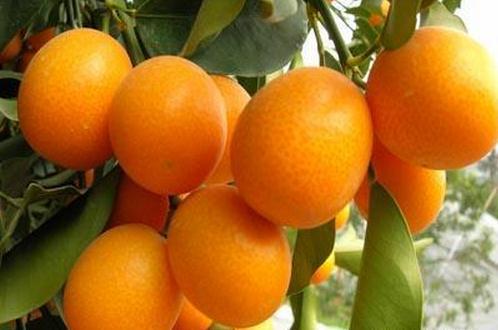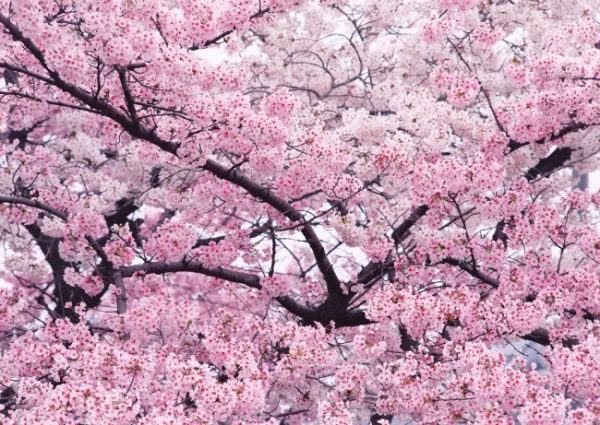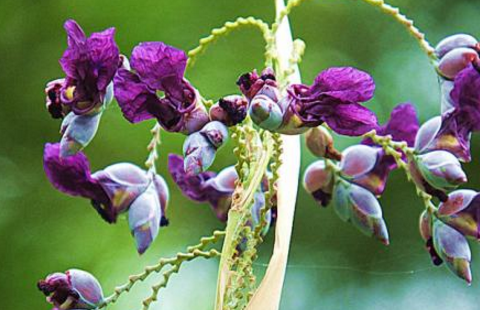Conservation methods and matters needing attention of kumquat
1. Lighting
Kumquat likes sunshine and warm and humid environment, so it is best to put kumquat in a sunny place, but pay attention to moderate light in summer, so that kumquat will grow well.
2. Pruning
For kumquat pruning is a very important thing, must be pruned according to the requirements, so that kumquat will keep the plant shape beautiful.
3. Fertilization
Kumquat likes fertilizer, so it is necessary to apply fertilizer frequently when breeding, about once in 10 days.
4. Watering
Kumquat is not resistant to water and moisture, so there can be no stagnant water in watering, otherwise kumquat will rot its roots, it is best to keep the basin soil moist.
5. Disease and insect nuisance
Kumquat is the most common pests, so once pests are found, it is more convenient to spray insecticides.

Well, the above is the content of the editor, I hope the content of the editor can help you, thank you for your reading!
How to raise kumquat, breeding methods and matters needing attention of kumquat
Kumquat is a fruit ornamental plant, which is more common in Guangdong and Hong Kong. Kumquat flowers are white and fragrant. Some varieties of fruit can be practical and have high ornamental value. The cultivation methods and precautions of kumquat are often mentioned. Today, I would like to share with you how to raise kumquat.
Culture methods of kumquat
1. Light, kumquat likes a warm and humid climate, daily maintenance should be placed in a sunny place, otherwise it will affect flowering and fruiting, cause branches and leaves to flourish, and reduce ornamental value. In summer, you should be careful not to put it in a place where the sun is too strong, and it is appropriate to keep room temperature without freezing in winter, so that the plant can fully dormancy and flowers and branches can flourish in the coming year.
two。 Pruning, kumquat pruning is an important measure to maintain its ornamentality. reasonable pruning can make the plant concentrate nutrition and bear more fruit, and the tree shape is beautiful; when pruning, you should pay attention to removing withered branches, diseased branches, and pruning branches that are too dense or too long. you can keep several first-year robust branches, leave a few buds on each branch, and then apply instant phosphate fertilizer again. After blooming and fruiting, each branch retains two or three fruits and one weak branch, pruning in time for autumn to avoid secondary fruit, which can ensure the consistency of fruit size and maturity.
3. Watering, kumquat like to wet, windy in spring, watering into the basin, can spray water to the leaves, increase leaf humidity; basin soil is too dry, will cause flowers and fruits to fall off, therefore, it is appropriate to keep the pot soil not dry or wet.
Points for attention of kumquat
Avoid stagnant water in the kumquat basin, which is easy to cause root diseases, drop flowers and fruits, and keep the potted soil moist. In the flowering season, it is necessary to water carefully to prevent rain during the flowering period, and to provide a good condition for pollination. Kumquat can not be placed indoors for a long time so as not to affect flower bud differentiation. Northern kumquat can be irrigated with fertilizer and water once a week, or it can be irrigated with 250 times vinegar water, which can make the leaves dark green and produce more results.
Reasonable conservation can effectively improve the ornamental value of kumquat, kumquat culture methods and matters needing attention are introduced here, I hope it will be helpful to you.
Extended reading:
Kumquat culture methods and matters needing attention, fertilization methods, pest control
Culture methods and matters needing attention of potted kumquat
Kumquat, also known as golden jujube, kumquat, small orange, etc., is an evergreen shrub of kumquat in Rutaceae. Potted kumquat has luxuriant branches and evergreen seasons, and it is fragrant when it blossoms, the white flowers are very soft, and the fruit is yellow and red when it is ripe. Whether it is ornamental leaves, flowers and fruits, it is also very common at home. Let's take a look at the cultivation methods of potted kumquat.
Grafting propagation
Potted kumquat is usually propagated by grafting, rootstocks are grafted with Chinese wolfberry, lime or sown seedlings, grafting methods are branch grafting, bud grafting and leaning grafting, branch grafting is carried out from March to April in spring, bud grafting is carried out from June to September, and pot planting is usually carried out from April to July.
Soil allocation
Kumquat likes fertilizer, and cultivation requires fertile, loose, slightly acidic sandy loam with good drainage. When pot cultivation, it is appropriate to choose 4 parts of rotten leaf soil, 5 parts of sand soil and 1 part of cake fertilizer. When changing the pot, the hoof or mature cake fertilizer should be applied at the bottom of the pot as the base fertilizer.
Watering management
Kumquat likes to be moist but avoid stagnant water, and the basin soil is easy to rot when it is too wet, so it is better to keep the basin soil moderately moist during growth. Dry and windy in spring, it is necessary to spray water on the leaves once a day to increase air humidity. Spray water 2 or 3 times a day in summer, and spray water to the ground. But avoid spraying water during flowering to prevent rotten flowers and affect the fruit. The stagnant water in the basin should be dumped in time in the rainy season to avoid rotting roots. When you put it outdoors in summer, it is best to use bricks to cushion the flowerpot to facilitate drainage. Kumquat is sensitive to water from white flowering stage to young fruit stage. at this time, the pot soil is too dry, the pedicel and fruit stalk are easy to detach and fall off, excessive watering, poor water permeability of basin soil, and easy to cause flower and fruit drop. At this time, it is appropriate to keep the pot soil in a semi-moisture state that is not dry or wet.
Light management
Kumquat likes a warm and humid climate with plenty of sunshine and should be placed in a sunny place during maintenance. If the light is not enough and the environment is shaded, it will often cause branches and leaves to grow, blossom and bear fruit less. Because kumquat likes cool climate in summer, or summer sunshine intensity is large, it is better to put it slightly in the shade at this time. It is advisable to keep room temperature without icing in winter. If the room temperature is too high and the plant is not fully dormant, it will grow weak in the following year and it is easy to drop flowers and buds.
Temperature management
Kumquat likes a warm and refreshing growth temperature. When the temperature is lower than 10 degrees Celsius in late autumn, it should be moved indoors in time. In winter, the room temperature should be kept at 6 to 12 degrees Celsius. Too low temperature is easy to suffer frost damage, and too high will affect plant dormancy, which is not conducive to flowering and fruiting in the coming year.
adequate manuring
Potted kumquat requires proper management of water and fertilizer. Branches from the beginning of new bud germination to before flowering can be treated with mature shallow sauce and residue water every 7-10 days and poured alum fertilizer water several times. After the beginning of summer, it is appropriate to apply more phosphate fertilizer to facilitate bud pregnancy and fruiting. Results fertilization should be suspended at the initial stage, and liquid fertilizer could be applied once a week until the end of September when the young fruit grew to about 1 cm.
Reasonable pruning
Pruning is an important technical measure to make kumquat blossom multiply and bear fruit. In order to make the tree shape beautiful and fruitful, a re-pruning is carried out before the sap begins to flow every year, cutting off withered branches, disease and insect branches, over-dense branches and overgrown branches, retaining 3-4 first-year robust and well-distributed branches, each branch only leaves 2-3 buds at the base, and the rest can be cut off, so that more than 10 full spring branches can germinate. When the new plant grows slightly to 15-20 cm, the heart is removed to make the plant shape plump, and a quick-acting phosphate fertilizer is applied at this time to promote flower bud differentiation. When blooming, flowers should be thinned properly to save nutrients. After the young fruit is born, when the young fruit grows to about 1 cm, the fruit can be thinned, the sturdy branches leave 2-3 fruits per plant, the weak branches retain one fruit per branch, and the whole plant fruit evenly. Cut off the autumn a little in time, do not make the secondary fruit, in order to achieve the same shape and maturity, and improve the ornamental value.
Pest prevention
Kumquat rarely found pests, only yellow butterfly (citrus butterfly) harm. The yellow Phoenix butterfly adult is 30 mm long, has a wingspan of 100 mm, yellowish green, and has a broad black longitudinal pattern on the back. The front wings are daily, and the rear wings are 6. The egg is round, 1 mm in diameter, yellowish white. The larvae feed on the new leaf buds and eat day and night, which can easily cause the leaves of kumquat to be engraved or gnawed off. The treatment of this pest is spraying 1000 times of 50% fenitrothion or 1000 times of dichlorvos at larval stage and catching insecticidal pupae outside the branches.
- Prev

Propagation methods of Cherry Blossom trees
When cutting propagation is carried out, different branches should be selected according to different seasons, usually one-year-old hard branches in spring and one-year-old twigs in summer, pay attention to keep the soil breathable and water frequently. To sow by collecting the seeds of cherry blossoms.
- Next

Culture method of Rhizoma Rehmanniae
1. The substrate for substrate cultivation can choose the silt of the lake pond or pastoral soil, and it is best to mix some organic fertilizer as the base fertilizer. two。 Lianlihua is a kind of plant that likes sunlight very much, but it is also very shady, so it should be kept away from light for about a week, especially in summer.
Related
- Fuxing push coffee new agricultural production and marketing class: lack of small-scale processing plants
- Jujube rice field leisure farm deep ploughing Yilan for five years to create a space for organic food and play
- Nongyu Farm-A trial of organic papaya for brave women with advanced technology
- Four points for attention in the prevention and control of diseases and insect pests of edible fungi
- How to add nutrient solution to Edible Fungi
- Is there any good way to control edible fungus mites?
- Open Inoculation Technology of Edible Fungi
- Is there any clever way to use fertilizer for edible fungus in winter?
- What agents are used to kill the pathogens of edible fungi in the mushroom shed?
- Rapid drying of Edible Fungi

